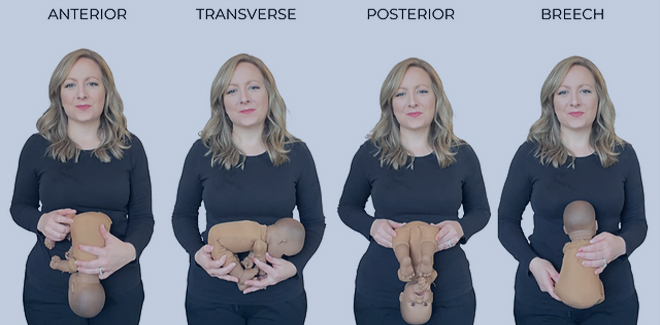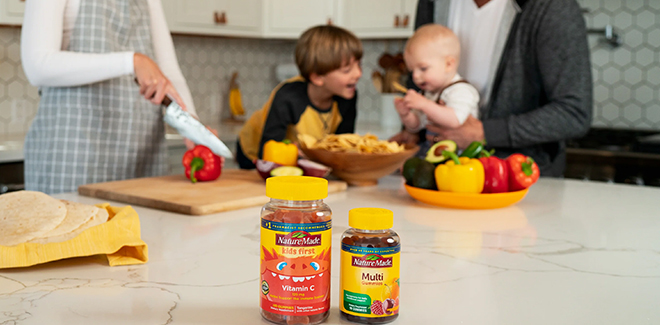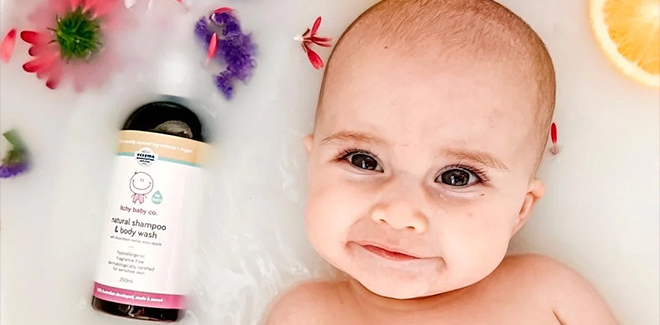Neonatal jaundice, often known as infant jaundice, is a common condition characterized by yellowing of the skin and eyes of infants. This yellow discoloration occurs due to an excessive accumulation of bilirubin, a yellow pigment that is created in the baby’s bloodstream during the breakdown of red blood cells. Neonatal jaundice is a common occurrence in babies and is usually harmless. It usually occurs in the first few days of life because the baby’s liver, which is responsible for processing and removing bilirubin, is still maturing. In many cases, this type of jaundice resolves on its own within a week or two as the baby’s liver becomes more efficient at processing bilirubin. However, if jaundice is severe, appears in the first 24 hours of life, or persists for more than two weeks, it may require medical evaluation and treatment to prevent possible complications.
The causes of jaundice in babies can be different and the most common form is physiological jaundice. This type is caused by the baby’s liver being too immature to process bilirubin effectively. Another cause is breastfeeding jaundice, in which insufficient consumption of breast milk in the early days can lead to dehydration and prevent the excretion of bilirubin. In addition, some babies may experience breast milk jaundice, a less common form that appears a week or so after birth and is caused by certain substances in breast milk that can interfere with the excretion of bilirubin. In rare cases, neonatal jaundice may be associated with a blood group incompatibility between the infant and mother, such as Rh or ABO incompatibility, which results in more severe jaundice and requires immediate treatment.
The treatment of infant jaundice is determined based on its severity and main cause. Mild cases may simply require ensuring that the child is properly fed, as frequent feedings can help increase bowel movements and increase bilirubin excretion. Phototherapy is a common treatment option for moderate to severe cases that involves the use of special blue lights that help break down bilirubin in the skin. In very severe cases, especially when blood group incompatibility is the cause, a blood transfusion may be necessary to replace the baby’s blood with blood from a compatible donor. Immediate medical evaluation and treatment is necessary when severe jaundice appears or persists to prevent possible complications and to ensure the health of the baby in this common and usually temporary condition.
Most cases of infant jaundice are not serious and resolve on their own within a few weeks. However, in some cases, very high levels of bilirubin in the blood can lead to a more serious condition called kernicterus, which can cause brain damage.
Treatment for infant jaundice may involve phototherapy, in which the baby is exposed to special lights that help break down the bilirubin in the blood, or in more severe cases, exchange transfusion, in which the baby’s blood is replaced with donor blood.
If you suspect that your baby has jaundice, it is important to consult with a healthcare provider, who can provide a proper diagnosis and recommend appropriate treatment if necessary.
What are the different types of newborn jaundice?
There are several types of newborn jaundice. The most common types include:
-
Physiological jaundice:
This is the most common type of newborn jaundice and occurs in up to 60% of newborns. It typically appears 2-4 days after birth and usually resolves on its own within 1-2 weeks. Physiological jaundice is caused by the immaturity of the newborn’s liver, which makes it difficult for the liver to process bilirubin.
-
Breastfeeding jaundice:
This type of jaundice occurs in some breastfed newborns in the first week of life. It is caused by inadequate intake of breast milk, which can lead to dehydration and the buildup of bilirubin in the blood. Breastfeeding jaundice can usually be resolved by increasing the frequency or duration of breastfeeding.
-
Breast milk jaundice:
This is a less common type of jaundice that can occur in some breastfed newborns after the first week of life. It is caused by certain substances in breast milk that can interfere with the liver’s ability to process bilirubin. Breast milk jaundice usually resolves on its own within a few weeks.
-
Hemolytic jaundice:
This type of jaundice is caused by the breakdown of red blood cells, which leads to a buildup of bilirubin in the blood. Hemolytic jaundice can be caused by a variety of factors, including blood type incompatibility between the mother and baby, infections, and genetic conditions.
Signs and symptoms of Infant jaundice
The most common sign of infant jaundice is a yellowing of the skin and whites of the eyes. This yellowing may start on the face and then spread to the chest, belly, arms, and legs. Other signs and symptoms of infant jaundice may include:
- Poor feeding or feeding difficulties
- Sleepiness or lethargy
- High-pitched crying or fussiness
- Dark urine (may appear orange or brown)
- Light-colored Newborn Stools (may appear white or gray)
- Abdominal swelling or fullness
- Unusual behavior or irritability
- Arching of the back or neck
- Difficulty waking up or staying awake
- Rapid breathing or difficulty breathing
If you suspect that your baby has jaundice, it is important to consult with a healthcare provider, who can provide a proper diagnosis and recommend appropriate treatment if necessary. It is especially important to seek medical attention if your baby has a high fever, is difficult to wake up or is extremely lethargic, or has other concerning symptoms.

There are several factors that can contribute to the development of infant jaundice. These include:
- Immature liver function: The liver is responsible for processing bilirubin in the body. In newborns, the liver is often not fully developed and may not be able to process bilirubin as effectively.
- Increased red blood cell breakdown: newborn baby have a higher number of red blood cells than adults, and these cells break down more quickly than in adults. This can lead to an increase in bilirubin production.
- Blood type incompatibility: If the mother’s blood type is different from the baby’s blood type, the mother’s immune system may attack the baby’s red blood cells, leading to an increase in bilirubin production.
- Breastfeeding: In some breastfed newborns, inadequate intake of breast milk can lead to dehydration and the buildup of bilirubin in the blood.
- Infection: Some infections, such as sepsis, can lead to an increase in bilirubin production.
Diagnosing baby jaundice
Baby jaundice, also known as neonatal jaundice, can often be diagnosed by a healthcare provider through a physical examination and a blood test to measure the level of bilirubin in the baby’s blood.
During the physical examination, the healthcare provider will look for signs of jaundice, such as yellowing of the skin and whites of the eyes. They may also examine the baby’s abdomen to check for any swelling or tenderness.
The blood test will measure the level of bilirubin in the baby’s blood. If the bilirubin level is high, further testing may be needed to determine the cause of the jaundice.
In some cases, a healthcare provider may recommend additional tests, such as a blood type test or a test to check for infections, to help determine the cause of the jaundice.

Can jaundice hurt my newborn?
In most cases, jaundice in newborns is not harmful and will resolve on its own within a few weeks. However, in some cases, very high levels of bilirubin in the blood can lead to a more serious condition called kernicterus, which can cause brain damage.
Kernicterus is a rare but serious complication of jaundice that can occur when very high levels of bilirubin in the blood cross the blood-brain barrier and cause damage to the brain. This can lead to long-term neurological problems, such as cerebral palsy, hearing loss, and developmental delays.
The risk of kernicterus is highest in premature babies, babies with certain underlying medical conditions, and babies whose jaundice is not properly diagnosed and treated. It is important to monitor your baby for signs of jaundice and to consult with a healthcare provider if you suspect that your baby has this condition.
If your baby has jaundice, your healthcare provider may recommend phototherapy, in which the baby is exposed to special lights that help break down the bilirubin in the blood, or in more severe cases, exchange transfusion, in which the baby’s blood is replaced with donor blood. These treatments can help reduce the risk of kernicterus.
Overall, while jaundice can be concerning for parents, most cases of newborn jaundice are not harmful and can be successfully treated. It is important to work closely with your healthcare provider to monitor your baby’s condition and ensure that they receive appropriate care.
If you need consultation and talk and various theories, join parenting groups













4 Responses
Is jaundice in my baby something to worry about?
Jaundice is fairly common in babies and in many cases it is a normal and temporary condition. It usually appears in the first few days of life and often resolves on its own within a week or two. However, if jaundice is severe, appears within the first 24 hours of life, or persists for more than two weeks, it may require medical evaluation and treatment. Severe jaundice can be harmful, as high levels of bilirubin can potentially affect the baby’s brain. Therefore, it is important to monitor the baby’s jaundice and consult a health care provider if there is concern.
What is the cause of jaundice in babies?
Baby jaundice is primarily caused by the following factors:
Physiological Jaundice: This is the most common type and occurs due to the inability of the immature liver to process bilirubin effectively in the first few days of life. As the liver matures, it becomes more effective at removing bilirubin from the bloodstream.
Lactation Jaundice: Some breastfed babies may develop jaundice because they are not getting enough breast milk in the early days, which can lead to dehydration and reduced bilirubin excretion.
Breast milk jaundice: This type of jaundice is caused by substances in breast milk that can interfere with the excretion of bilirubin. It usually appears a week or so after birth and may last for several weeks.
Blood group incompatibility: In rare cases, jaundice may be caused by Rh or ABO blood group incompatibility between the baby and the mother. This is likely to cause severe jaundice and may require treatment.